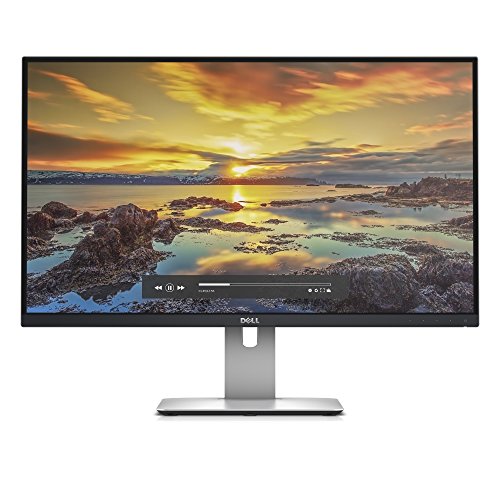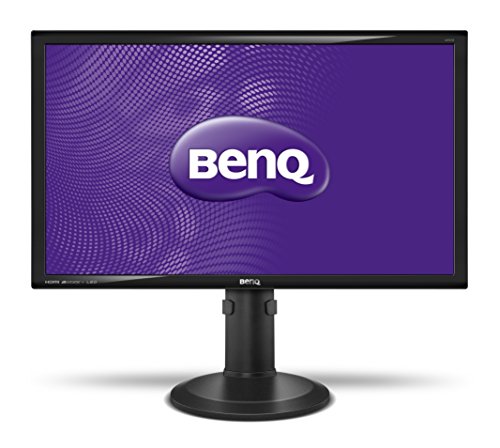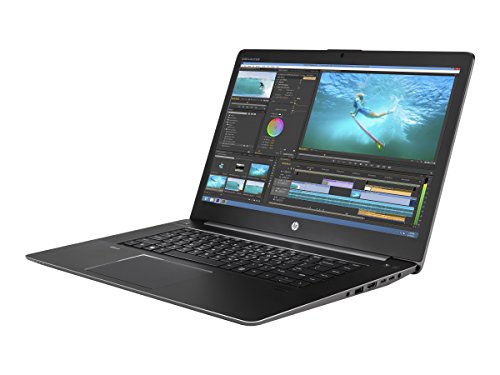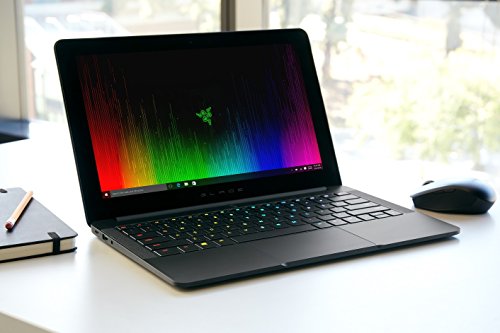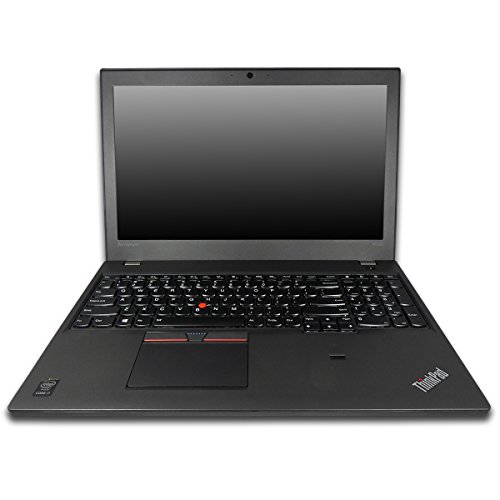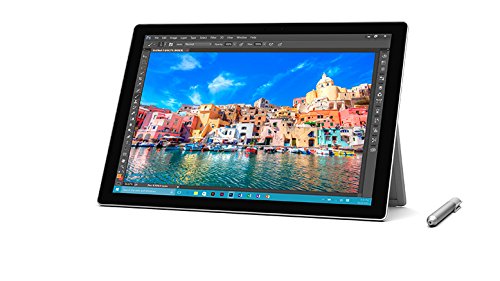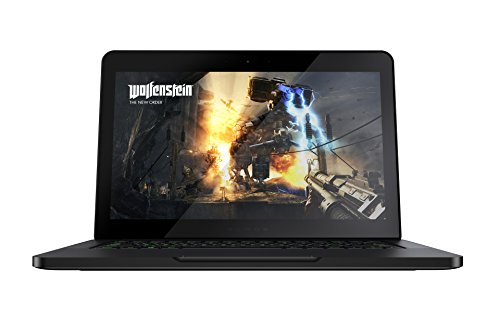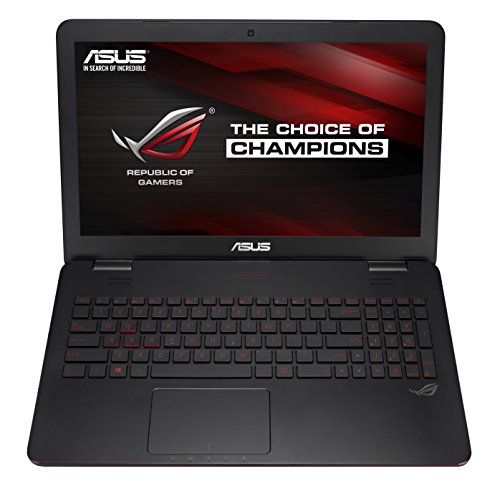This article was last updated in November 2016
When it comes to choosing laptops for creative work, art or graphic design, digital painting or 3D modeling, there are a few considerations.
This article is split into two parts. The first part looks at what the specifications mean, and the second part looks at the different laptops available currently in the market.
If you're an art student looking to get a new laptop for school, or an professional looking for a workstation, the list below should help you save some time.
My background: I'm an artist/designer/journalist working at a newspaper. Over the years, I've used slow, fast, powerful and crappy computers (still do), and work on both Mac and Windows platform.
Operating system
The most important thing is to find out if the software you use is supported on Windows or Mac.
Not all applications are cross platform. For example, Autodesk 3ds Max runs only on Windows. Final Cut Pro runs only on Mac. Thankfully, most of Adobe's graphic applications are supported on both Windows and Mac.
Specifications
Just to be sure, you check with the software's website for their minimal supported system specifications. That should give you a good starting point from which to choose your computer's specification. Generally speaking, laptops nowadays are quite powerful even for the entry level ones.
Storage - This happens to be the bottleneck of any machine. It's best to get SSD (more expensive) so that your system can load fast, save and open files fast. Some laptops offer both solid state drives (SSD) and the slower spinning hard disk drives (HDD) which gives you the best of both worlds - you can install the OS on the fast SSD and store your huge files on the spacious but slower HDD. Most 13-inch laptops have only one slot for storage drives. When it gets to 15-inch, there are some that offer more than one slot for storage drives, which means you get to choose both SSD and HDD.
RAM - This is memory used to store temporary work, e.g. Photoshop layers you have yet to save, the many applications opened in the background but not in use, your many browser windows. Note that your OS uses RAM too. 8GB RAM is the very least you should get. It's best to get 16GB. RAM is affordable and this is not the area to save significant money.
Graphics card - If you're just creating 2D work, you can save money by not getting a high-end graphics card. A high end graphics card allows you to move around a highly detailed or textured 3D model with no lag. For the purpose of this article and the laptop comparison further below, when I mention that a graphics card is mid-range, it means it's suitable for 3D work for a relative large number of polygons in wireframe mode and may lag when it comes to previewing textured mode and moving around. High-end graphics card can handle detailed textured 3D scenes and move around without lag.
Processor - Either duo or quad core processors. Not many applications use quad core processors effectively yet. If you need to render 3D or videos regularly, definitely go for a quad core.
Weight
Since it's a laptop, portability is going to be a concern. If you bring your laptop around often, it might be better to get a lighter one. But seriously speaking, performance laptops are not going to be light.
Screen size and resolution
Screen size and resolution will affect your productivity. A resolution of 1920 by 1080 pixels should provide ample working space and still be able to show menus, control palettes. Next consideration is screen size. A larger screen will enable you to see details clearer (if the resolution is high enough) and make it easier to click on the menus and control palettes. I suggest at least a 15-inch screen with 1920 by 1080 resolution.
Nowdays, there are screens that offer much higher resolution than 1080P. E.g. 4K screens at 3840 by 2160 resolution. If you want a high resolution screen, make sure that the software you're using supports it or the user interface, e.g. menus and buttons, are going to appear tiny and almost unusable. Do your research in respective software format. E.g. Adobe CS5 and CS6 menus are buttons are tiny and incredibly frustrating to use.
Panel type
It's best to get an IPS panel that will provide the widest viewing angle. In another words, you'll be able to see the same colour no matter the angle of the screen. For the laptop comparisons below, if there's no mention of IPS, it means I wasn't able to find any information regarding the type of panel.
It's also good to get a matte screen instead of one that's glossy. Glossy means you'll get reflections. I prefer matte. It's just a personal preference.
Gamut
If you're into print production or need colour accuracy, then get a laptop that supports as close to 100% Adobe RGB as possible. The laptops have good IPS screens with decent colours and viewing angles, however they don't come close to 100% Adobe RGB.
If you have the budget for laptops with 100% Adobe RGB screens, check out this list
Battery life
Graphic applications can be processor intensive and use up a lot of battery power. Of course it's best to have a laptop with longest lasting battery life but in the real world, you're likely to be plugging into a power supply.
Note that 4K resolution screens will use up more power as well.
My quick recommendation: For the budget constrained, get the
ASUS K501UX (2kg) (my recommended value for money choice), followed by
Dell Inspiron 15 (7559) (2.7kg). For high end systems, look at the Lenovo Thinkpad P-series, Dell Precision or HP Zbook Studio G3..
The choices
Alright, here are the laptop choices.
![]()
The P-series Thinkpad laptops are the portable workstations offered by Lenovo. It used to the the W-series. I wish they would stop messing around with the letters as it gets confusing fast.
The P50s is considered low-end but still powerful. If you have the budget, go for the P50 or P70 for the quad-core processors and more configurable.
Note that there 3 screen options to choose from, 15.6-inch FHD, 15.5-inch (2880x1620) and 15.6-inch 4K. There's an anti-glare filter that's not totally matte.
Here's quick comparison.
| Model | P50s | P50 | P70 |
| Processor | Up to Intel Core i7-6600U (dual 2.6Ghz) | Up to Intel Xeon E3-1505M (quad 2.8Ghz) | Up to Intel Xeon E3-1575M (quad 3Ghz) |
| Screen | 15.6 inch IPS | 15.6 inch IPS | 17.3 inch IPS |
| Resolution | 1920 x 1080 | 1920 x 1080 | 1920 x 1080 |
| Graphics card | NVIDIA Quadro M500M 2GB | NVIDIA Quadro M1000M 4GB | Up to NVIDIA Quadro M2000M 4GB |
| RAM | Up to 32GB | Up to 64GB | Up to 64GB |
| Storage | Up to 512GB SSD | Up to 1TB SSD | Up to 1TB SSD |
| OS | Windows 10 Home | Windows 10 Professional | Windows 10 Professional |
| Weight | 2.2kg | 2.5kg | 3.43 |
| Price | Click to check | Click to check | Click to check |
![]()
Alienware (R3 released in Q3 2015)
Alienware have some of the the biggest and baddest (in a good way) laptops in the market. The brand is synonymous with gaming laptops. Their laptops are noted for their graphics prowess, in other words they have high-end graphics card, which means they are also good for 3D work. The hardware is of high specifications, and the price is also on the high end.
Alienware laptops models are differentiated by their screen size, e.g. 13, 15 and 17.
Recently, they have added the option to included a Alienware Graphics Amplifier (AGA) to further boost the graphics prowess. Basically, the AGA is a graphics card enclosure that you can connect to your laptop via a proprietary cable. Note that you have to purchase the graphics card separately. It's really targeted at gamers. 3D digital artists probably don't need that extra bulk.
| Model | 13 | 15 | 17 |
| Screen | 13 inch IPS | 15.6 inch IPS | 17.3 inch IPS |
| Resolution | 1920 x 1080 | 1920 x 1080, 3840 x 2160 | 1920 x 1080 |
| Graphics card | NVIDIA GeForce GTX 965M (4GB) | NVIDIA GeForce GTX 965M (2GB) or 970M (3GB) or 980M (4GB) | NVIDIA GeForce GTX 970M (3GB) or 980M (4GB) |
| RAM | Up to 16GB | Up to 16GB | Up to 16GB |
| Storage | Up to 512GB SSD or 500GB HDD | 2 slots for 1TB SSD and/or 1TB HDD | 2 slots for 1TB SSD and/or 1TB HDD |
| OS | Windows 8.1 (64-bit) | Windows 8.1 (64-bit) | Windows 8.1 (64-bit) |
| Weight | 4.5 lbs / 2.1kg | 7.1 lbs / 3.2kg | 8.33 lbs / 3.8kg |
| Warranty | 1 year (up to 5 years on Dell's website) | 1 year (up to 5 years on Dell's website) | 1 year (up to 5 years on Dell's website) |
| Price | Click to check | Click to check | Click to check |
If you need portability, the 13-inch is most compact and light. The smaller model also uses a weaker graphics card but you can configure up to NVIDIA GeForce GTX 965M with 4GB GDDR5.
The bigger brothers 15 and 17 have a variety of graphics card options, such as the high-end NVIDIA GeForce GTX 970M, AMD Radeon R9 M395X with 4GB GDDR5 or NVIDIA GeForce GTX 980M with 8GB GDDR5.
There are many screen options. You can go for matte 1080P or 4K resolution.
Again, get one with SSD.
The warranty for Alienware is only 1 year. If you buy it through Dell's website, you get the option to extend your warranty, and also choose more customization.
If you don't like the flashy design of Alienware, the plain but equally as powerful Dell Precision workstation is your alternative.
![]()
This is a tablet laptop, one where you can draw on the screen. With the Surface Pro 4 out already, the price has dropped for Surface Pro 3 so if you don't need the latest, it's worth considering the earlier model.
Key specifications:
- Screen: 12 inches, 2160 by 1440 pixels
- Weight: 1.76lbs (800 grams)
- Processor: i3, i5, i7 (Dual core 1.5Ghz - 1.9Ghz)
- Storage: 64 - 512GB
- RAM: 4 - 8GB
- Comes with pressure sensitive stylus
I've invited a guest artist to review the Surface Pro 3 before and it's a review you should check out if you're interested in the ultimate portable laptop.
The downside of the Surface Pro 3 is the use of integrated HD Graphics (HD 4200, 4400, 5000). This means the unit is not as good at 3D performance compared to other laptops in this article.
One important thing to note is, the storage space indicated has not taken into account the OS which takes up 28GB (huge, I know). So getting the 64GB model means you only have 36GB of storage left.
The huge plus for the Surface Pro 3 is the ability to bring it everywhere and use it with comfort because it's so light (lightest amount all other laptops mentioned). At a moment's notice, you can just pack it up and go, fast.
![]()
Microsoft has improved on the SP3 in every imaginable way with the Surface Pro 4. If you want the latest all-in-one tablet/computer, then this is the one to get.
There are many models with different configurations to choose from and they are
- Microsoft Surface Pro 4 (128 GB, 4 GB RAM, Intel Core M)
- Microsoft Surface Pro 4 (128 GB, 4 GB RAM, Intel Core i5)
- Microsoft Surface Pro 4 (256 GB, 8 GB RAM, Intel Core i5)
- Microsoft Surface Pro 4 (256 GB, 8 GB RAM, Intel Core i7e)
- Microsoft Surface Pro 4 (256 GB, 16 GB RAM, Intel Core i7e)
- Microsoft Surface Pro 4 (512 GB, 16 GB RAM, Intel Core i7e)
I would personally get the 256GB storage and 8gb RAM system if I'm in the market for one. That's the unit somewhere in between. The higher end units are too pricey.
![]()
Microsoft Surface Book (Released 4Q 2016)
While the Surface Pro 4 is a tablet that doubles up as a laptop, the Surface Book is a laptop that doubles up as a tablet.
Main difference is the Surface Book has dedicated graphics card so you'll be able to handle 3D programs more efficiently. Check out a guest artist review of the Surface Book at http://www.parkablogs.com/picture/artist-review-of-microsoft-surface-boo...
Microsoft has added the option to have Intel i7-6600U processor (dual 2.6Ghz) in late 2016. It's a decent and fast processor for a 2-in-1 like the Surface Book.
![]()
Dell Precision Mobile Workstations (Released 1Q 2016)
If you don't like Dell's flashy Alienware, then check out the Dell Precision Workstations. The Precision Workstation computers intended as workstations for CAD / Architecture / CG professionals, or as small-scale business servers.
Dell Precision latest series are 5000 and 7000, available in 15.6 and 17.3 inches. More specifically, the model numbers are 5510, 7510, 7710.
Key specifications:
| Model | 5000 Series | 7000 Series |
| Screen | 15.6 | 17.3 |
| Resolution | 1920x1080 matte or 3840x2160 glossy touchscreen | 1920x1080 matte or 3840x2160 glossy touchscreen |
| Graphics card | NVIDIA Quadro M1000M/M2000M with 2GB/4GB | NVIDIA Quadro M3000M/M4000M/M5000M, AMD FirePro W5170M, W7170M |
| Processor | Quad 2.3Ghz to Quad 2.8Ghz | Quad 2.3Ghz to Quad 2.8Ghz |
| Storage | Up to 1TB SSD and/or 1TB HDD | Up to 1TB SSD and/or 1TB HDD |
| RAM | Up to 32GB | Up to 64GB |
| Weight | 3.93lb / 1.78kg | 6.16 lbs / 2.79kg |
| Warranty | 3-years/1-yr battery | 3-years/1-yr battery |
They are available in either 15.6-inch or 17.3-inch screens. The graphics card in all the models are different.
I've been sent a 5510 Series 5000 to review a few months ago and it's extremely fast. Not surprisingly since it's quad core and running on SSD.
The default configurations are not optimal so you have to configure them to get the best performance. I recommend upgrading the SSD, RAM and processor in that order. You might want to get a battery with longer life too. To get pre-configured models, visit these links to Amazon: 5510, 7510, 7710
These laptops are quite heavy and start at 2kg.
3 year warranty is provided for the Dell Precisions as compared to the 1 year for the Dell Alienware. It's best to get these laptops on Dell's website because there are many ways to customize them, and you also get to buy up to 5 years of warranty support.
![]()
HP Zbook Studio G3 competes with the Dell Precision at the high end market. Whatever the Dell Precision offers, you can find it on the HP Zbook Studio G3 also.
The main highlight is how configurable it is.
The other thing I like is it has a 15.6-inch 4K matte screen with 85% Adobe RGB gamut support. While the colour gamut cannot match glossy screens, it is great for a matte screen.
If you have the budget, go for Dell Precision or HP Zbook Studio G3. And before you label a laptop from 4Q 2015 as slow, note that the Apple Macbook Pro released in 4Q 2016 was one year late and was not able to overtake the Dell Precision and HP Zbook 3 in terms of specifications.
![]()
There are 13-inch and 15-inch Macbook Pro models and the price range mentioned above are for the 15-inch models. The 13-inch screen may be too small for graphics work.
Key specifications
- Processor: Dual 2.0Ghz to Quad 2.9Ghz
- RAM: Up to 16GB
- Graphics card: Intel Iris Graphics 540, Intel Iris Graphics 550, Radeon Pro 450, Radeon Pro 455
- Storage: Up to 1TB Flash storage
- Weight: 1.37 - 1.83kg
- Screen: 15.4 inch, 2880 by 1800 pixels
- Warranty: 1 year warranty with optional 2 extra years with Applecare purchase
The Macbook Pro that came before the 4Q 2016 released was already quite good in terms of performance. The new Macbook Pro, in my opinion, offered only incremental improvement that's not worth the extra price that Apple is charging.
The screen is great and is now brighter at 500 nits but I've never seen anyone use monitors at their maximum brightness. Colour accuracy and viewing angles are great. The screen resolution of 2880 by 1800 is also sweet because details will appear sharp.
Macbook Pro 2016 has the new Touch Bar feature which is nice to have but it's just a different way of doing things, and does not mean you will save significant time using it.
Main downside of the Macbook Pro 2016 is they have replaced all the old ports with USB Type-C Thunderbolt 3 ports. This means you'll may adaptors to connect to your external monitor, phone, SD card, scanner and other devices.
As with Apple computers, the most important thing to do before buying is to check if the software you're using is supported on the Mac OS, and for 3D programs whether they are supported by the graphics card.
If this is the first time getting a Mac, note that files created by an application can be opened in the same application running on Windows. E.g. Photoshop for Mac files can be opened by Photoshop for Windows.
In my opinion, Macbook Pro 2Q 2015 is represents greater value for money. It's only slightly slower but significantly cheaper. And you get to have all the commonly used ports. The future may be USB Type-C, but that future is not here yet so it's probably still better to stick with something accessible. For all friends who ask me for advice, I always ask them to save the money and get the 2Q 2015 model if they can find it at a good price. Try the refurbished section on Apple online store. Use the money you save to get the 2 additional years of AppleCare.
![]()
Aorus (Released Q1 2016)
Key specifications:
| Model | X3 Plus | X3 Plus v3 | X7 | X7 v2 | X7 Pro |
| Screen | 13.9" QHD+ 3200x1800 | 13.9" QHD+ 3200x1800 | 17.3-inch Full HD 1920x1080 | 17.3-inch Full HD 1920x1080 | 17.3-inch 1920x1080 IPS LCD |
| Graphics card | Intel® HD Graphics 4600 (i7-4710HQ)
Intel® HD Graphics 5200 (i7-4860HQ)
NVIDIA GeForce GTX 870M GDDR5 6GB | Intel® HD Graphics 4600
NVIDIA GeForce GTX 970M GDDR5 6GB | NVIDIA GTX 765M SLI 4GB | NVIDIA GTX 860M SLI 8GB | NVIDIA® GTX 970M SLI 6GB |
| Processor | Intel® Core i7-4710HQ (2.5GHz-3.5GHz), i7-4860HQ (2.4GHz-3.6GHz) | Intel® Core i7-4710HQ (2.5GHz-3.5GHz) | Intel Core i7-4700HQ (2.4GHz-3.4GHz) | Intel Core i7-4860HQ (2.4GHz-3.6GHz) | Intel Core i7-4870HQ (2.5GHz-3.7GHz) |
| RAM | Up to 16GB | Up to 16GB | Up to 32GB | Up to 32GB | Up to 32GB |
| Storage | 2 slots for SSD and/or HDD | 2 slots for SSD and/or HDD | 4 slots for SSD and/or HDD | 4 slots for SSD and/or HDD | 4 slots for SSD and/or HDD |
| Weight | 1.8kg | 1.8kg | 3kg | 3kg | 3kg |
| Warranty | Warranty: 2 years / 1 year battery | Warranty: 2 years / 1 year battery | Warranty: 2 years / 1 year battery | Warranty: 2 years / 1 year battery | Warranty: 2 years / 1 year battery |
| Price | Click to find out | Click to find out | Click to find out | Click to find out | Click to find out |
Marketed as gaming laptops, these are also among the more powerful laptops.
The various models offered by Aorus are X3, X3 Plus,X3 Plus v3, X7, X7 v2, X7 Pro.
X3 was left out because it's has a 13-inch screen. Sports a NVIDIA GeForce GTX 870M GDDR5 6GB by the way.
X3 Plus and X3 Plus v3 have 13.9-inch 3200x1800 screens. The graphics cards are NVIDIA GTX 870M and GTX 970M respectively. The GTX 870M is very good, and the GTX 970 is top of the line.
X7, X7 v2 and X7 Pro main difference would be in the graphics card. They are NVIDIA GTX 765M, GTX 860M and the GTX 970. These laptops all have 17.3-inch screens but their resolution is only 1920x1080, lower than that of the X3s' 13.9-inch models.
![]()
Razer Blade (Release 1Q 2016)
These laptops are from the same makers as their popular Razer gaming computer mice. Currently, they have two models, the small 12.5-inch Razer Blade Stealth and 14-inch Razer Blade.
The interesting model is the Stealth which comes with the not-so powerful Intel® HD Graphics 520. However, you have the option to pair it with a Razer Core, an external graphics card enclosure through Thunderbolt 3 connection. Razer Core's graphics card is sold separately. Anyway for a 12.5-inch screen running 2560 x 1440 resolution, it's not suitable for graphics work (user interface is too small) so you need to plug it into an external monitor.
Key specifications:
| Models | Razer Blade Stealth | Razer Blade Pro |
| Screen | 12.5-inch LED | 14-inch LED |
| Resolution | 2560 x 1440 or 3840 x 2160 touchscreen | 3200 x 1800 touchscreen |
| Graphics card | Intel® HD Graphics 520 | NVIDIA GeForce GTX 970M (6GB) |
| Storage | Up to 512GB SSD | Up to 512GB SSD |
| OS | Windows 10 | Windows 10 |
| Weight | 2.75 lbs./ 1.25 kg | 4.25 lbs / 1.93 kg |
| Warranty | 1 year | 1 year |
![]()
ASUS (Released 3Q 2015)
ASUS has a few notable laptops at really attractive prices.
My favourite all-time recommendation for budget hunters would be the ASUS K501UX. For USD $800, you get dual-core 2.5Ghz, 1080P matte IPS screen, 8GB RAM, 256GB SSD and the NVIDIA GeForce GTX 950M.
Or add USD$ 100 and get the ASUS K501UW and you can get a 512GB SSD and NVIDIA GTX 960M.
You have access to the RAM slot and can easily add another 8GB RAM to it.
![]()
MSi (Released 1Q 2016)
MSi, the best gaming notebook provider, or so they say. Actually, they are very good indeed.
I've picked out a few laptops that caught my eye.
| Model | MSI GS40 Phantom | MSI GS60 | MSI GT60 Dominator Pro | MSI GS70 | MSI GT72 Dominator Pro |
| Screen | 14-inch | 15.6-inch | 15.6-inch | 17.3-inch | 17.3-inch |
| Resolution | 1920 x 1080 | 1920 x 1080 | 2880 x 1620 | 1920 x 1080 | 1920 x 1080 |
| Graphics card | NVIDIA GeForce GTX 970M (3GB) | NVIDIA Geforce GTX 860M (2GB) | NVIDIA Geforce GTX 880M (8GB) | NVIDIA GeForce GTX 860M (2GB) | NVIDIA Geforce GTX 980M (8GB) |
| Processor | Intel Core i7-6700HQ (Quad 2.6Ghz) | Intel Core i7-4700HQ (Quad 2.4Ghz) | Intel Core i7 4800MQ (Quad 2.7Ghz) | Intel Core i7-4700HQ (Quad 2.4Ghz) | Intel Core i7-4710HQ (Quad 2.5 GHz) |
| RAM | Up to 16GB | Up to 16GB | Up to 16GB | Up to 32GB | Up to 32GB |
| Storage | 2 slots for SSD and/or HDD | 2 slots for SSD and/or HDD | 2 slots for SSD and/or HDD | 2 slots for SSD and/or HDD | 2 slots for SSD and/or HDD |
| Weight | 1.6kg | 1.96kg | 3.5kg | 2.66kg | 3.9kg |
| Warranty | 2 years warranty | 2 years warranty | 2 years warranty | 2 years warranty | 2 years warranty |
| Price | | | | | |
MSi laptops are on par with ASUS in most cases. The main difference is MSi backs their laptop with 2 years warranty (1 year global).
The Geforce GTX 960M, 860M are mid-range graphics card. Geforce GTX 880M and 980M are the high-end ones.
Conclusion
As you can probably see, there are lots of options.
My preference for choosing a laptop would be to have at least SSD for storage, an IPS panel with at least 1080P resolution and at least 2 years of warranty.
As usual, check out more reviews on Amazon. All the links are provided for above.
In short, for budget conscious, I recommend the ASUS K510UX. For those with more budget, I recommend the Dell Precision 15-inch 5510 or HP Zbook Studio G3.



































































